Abstract
This document is the second part of the study on water saving potential in the EU. It contains four case studies from regions in four different European Member States which encounter increasing water stress. The case studies take the generic findings of the main synthesis report to more depth. The current and the projected situation in each river basin is first analyzed and possible measures to alleviate water deficit which were depicted in the synthesis report. The first case study analyses the situation in the Guadalquivir river basin in southern Spain which focuses only on the analysis of water saving measures on irrigated agriculture. Guadalquivir is an example of an old and relatively well managed river basin that has reached the limit of sustainable water use. Any possibility to increase water supply is limited. The rising demand for irrigation water in this basin, coinciding with a series of dry years and reduced recharge, has increased the water deficit. As of 2006, the water deficit is estimated at 11% of the demand. The effect of technical, economic and social measures on water saving is therefore analysed in detail. The second case study is that of the Ardèche river basin in France investigating costs and benefits of different measures and actions through qualitative and quantitative assessments for the five main water using sectors (household, tourism, agriculture, industry and energy). It explores potential savings versus maximal savings, temporal allocation, feasibility of measures (coherence, synergies, conflicts of interests, when available, the issues of wet and dry savings (savings that lead to effective environmental improvements), negative incentives that prevent from achieving this savings, water rights, etc), energy issues (cost benefits ratios of measures included in the Energy Action plan for energy savings and identify to what extent it can be extrapolated to the water sector), virtual Water in the context of water saving, role of the consumers in the context of water saving (water labelling, changes in consumption patterns), and values of environmental benefits (which value for additional water into the ecosystem -use and non-use values- avoided damages and investments). Water scarcity is not only an issue in southern Europe. The third case study assesses water saving potential scenarios for South and South-East England (United-Kingdom). The South and Southeast of England are particularly cause for concern, with London rated as ‘very low’ by the World Resources Institute with regards to water resources. For the five sectors different water saving measures, including water labelling, metering and economic instruments are discussed. The last and forth case study focuses on the Plastiras and Smokovo Reservoir in Greece. It discusses three different water saving scenarios based on hydrographical modelling and the related costs and benefits.URL
http://ec.europa.eu/environment/water/quantity/pdf/water_saving_2.pdfCase study
One or more case studies to which this source is related (if applicable).
Last modified: Jan. 28, 2016, 5:20 p.m.


 Ελληνικά
Ελληνικά